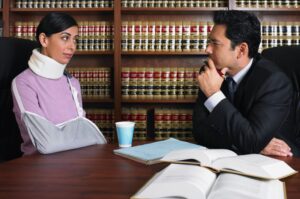Navigating Pedestrian Accident Laws: A Primer
Pedestrian accidents are unfortunately common and can lead to serious injuries or even fatalities. Understanding pedestrian accident laws is crucial for anyone involved in such an incident, whether as a pedestrian or a driver. This guide will provide an overview of the legal landscape surrounding pedestrian accidents, helping you navigate the complexities of the law.

Understanding Pedestrian Rights and Duties
Pedestrians have specific rights and duties under the law. While they generally have the right-of-way in crosswalks and sidewalks, they also must obey traffic signals and signs. It’s important to understand these laws as they can significantly impact liability in the event of an accident.
Determining Fault in Pedestrian Accidents
Determining who is at fault in a pedestrian accident can be complex. In some cases, the driver may be entirely at fault, while in others, the pedestrian may bear some or all of the responsibility. Factors such as jaywalking, distracted walking, or a driver’s failure to yield can influence fault determination.
The Role of Negligence
Most pedestrian accident claims hinge on the concept of negligence. A party is negligent if they fail to act with the level of care that someone of ordinary prudence would have exercised under the same circumstances. Establishing negligence is crucial for any claim.
Comparative and Contributory Negligence
Many states follow comparative negligence rules, allowing a pedestrian to recover damages even if they were partially at fault. However, their compensation will be reduced by their percentage of fault. In states with contributory negligence laws, if the pedestrian is found even slightly at fault, they may not be able to recover any damages.
The Importance of Gathering Evidence
If you are involved in a pedestrian accident, gathering evidence is crucial. This includes photographs of the accident scene, witness statements, medical records, and police reports. This evidence can be vital in proving fault and establishing the extent of your injuries.
Dealing with Insurance Companies
After an accident, dealing with insurance companies can be a challenge. Insurance adjusters may try to minimize your claim or deny it altogether. It’s important to know your rights and not to accept a settlement without consulting a legal expert.
Knowing the Statute of Limitations
There is a limited time frame to file a pedestrian accident claim, known as the statute of limitations. This varies by state, and missing this deadline can mean forfeiting your right to compensation.
Seeking Legal Assistance
Navigating pedestrian accident laws can be complex and overwhelming. Consulting with a personal injury attorney who specializes in pedestrian accidents can make a significant difference. An attorney can help you understand your rights, gather and present evidence, negotiate with insurance companies, and represent you in court if necessary.
Free Discovery Call:
If you’ve been involved in a pedestrian accident, don’t navigate the legal complexities alone. Protect your rights and maximize your compensation by scheduling a free case evaluation with an experienced personal injury attorney.

